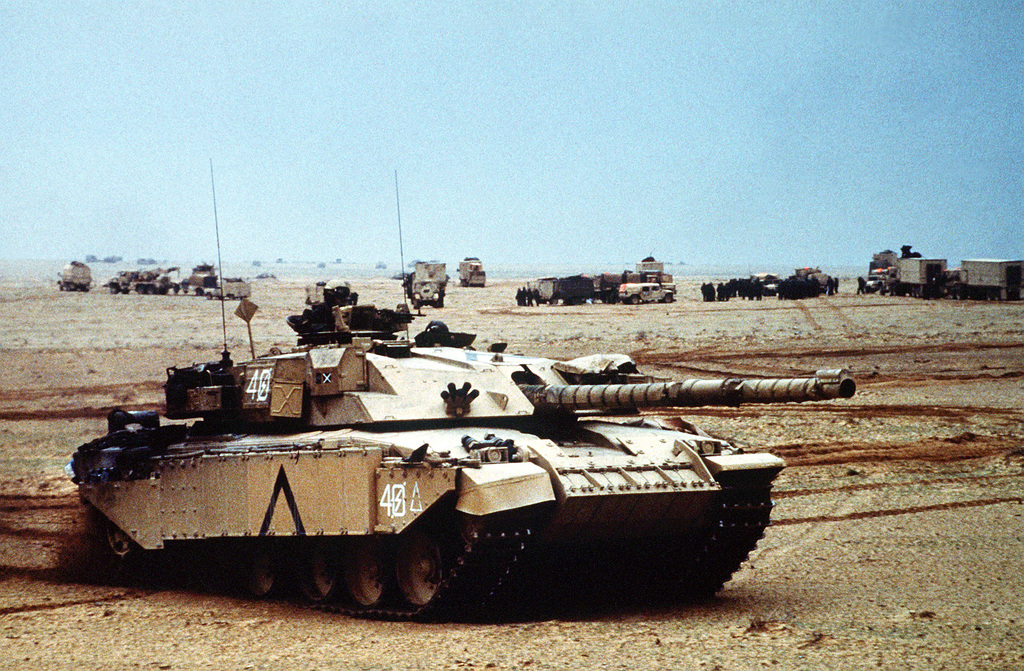Introducing the Challenger tank
If you are an HGV mechanic who is keen to further your career or are even just starting out in the industry, you will no doubt have heard about the iconic British Challenger tank.
The FV4034 Challenger 2, also known as the Challenger 2, is a third-generation main battle tank in service in the British Army.
It provides the UK’s only guaranteed 24-hour, all-weather mobile, protected precision direct fire, anti-tank manoeuvre capability and has been used by the British Army on operations in Bosnia and Herzegovina, Kosovo and Iraq.
The Challenger 2 is used by four armoured regiments, with each regiment operating 56 Challenger 2 tanks, and there are an estimated 60,000 tanks currently in operation across the globe.
Let’s take a look at the Challenger in more detail...
Background
The British Challenger tank entered service in 1998 and is expected to remain in service until 2035. Built in the UK by Vickers Defence Systems (now BAE Systems and Land Armaments), the Challenger 2 was initially designed as a replacement to the Challenger 1 tank back in 1986.
As the British Army’s main battle tank, one of its strengths lies in its ability to shock the enemy by placing them under pressure by a rapid and fully committed advance, causing them to break and retreat.
The Challenger 2 is heavily armoured and designed for use in direct fire zones. However, it has the ability to engage both hard and soft targets and can operate across a spectrum of high intensity conflict, insurgency and peace-keeping roles.
Foundations and technology
It is said that firepower, mobility and protection are the ‘Iron Trinity’ three key aspects of any fighting vehicle and that all tanks must achieve a balance between these fundamental characteristics – and it’s safe to say the Challenger 2 doesn’t disappoint.
With its world-beating technologies, the Challenger prioritises firepower and protection with its record-holding armament and world-class Dorchester 2 armour.
Although such technologies make it slightly slower than some of its opponents, the accuracy and lethality of the Challenger 2 is enough to offset higher speeds.
With a maximum road speed of 36 miles per hour, the Challenger 2 is equipped with a L30A1 tank gun and armed with a L94A1 EX-34 chain gun and a L37A2 machine gun.
Optical and thermal imager sights are provided for the commander and gunner, including an independent 360-degree panoramic sight for the commander, enabling rapid target engagement.
It has a mass of 62.5 tons, with a combat-ready weight of 75 tonnes with add-on armour modules, and mobility is provided through a 12-cylinder, 1,200hp Perkins CV12 diesel engine.
Crew
The Challenger 2 has a four-man crew. The commander is responsible for the tactical movement and command of the vehicle and crew, the loader is responsible for loading the main armament and machine gun, the gunner who is responsible for identifying targets and firing weapons, and finally the driver.
Future
As mentioned above, the Challenger 2 is expected to remain in service until 2035. Since entering service, various upgrades have sought to improve the Challenger 2's protection, mobility and lethality, the most recent of which being the Life Extension Programme (LEP).
Opportunities with M&E
At M&E, we have plenty of opportunities for mechanics interested in overseas contract work who want to work on exciting equipment, further their careers and develop their skill set.
From Europe to the Middle East, at M&E, we have contracts in a number of different countries, including the opportunity to work on vehicles such as Challenger tanks, M1 tanks, Humvees and even Bradley Fighting Vehicles.
So, to find out more about our current vacancies and to up the gear on your career, contact our team today.








